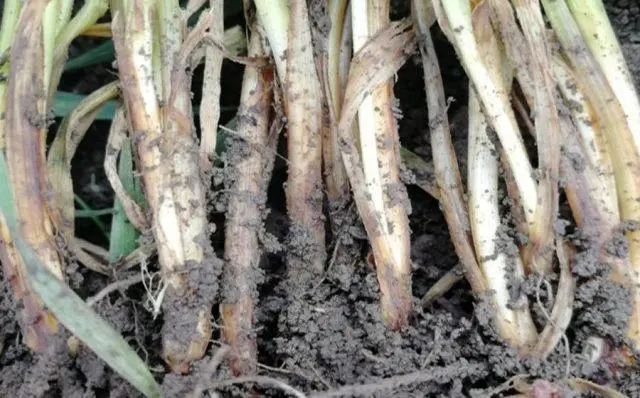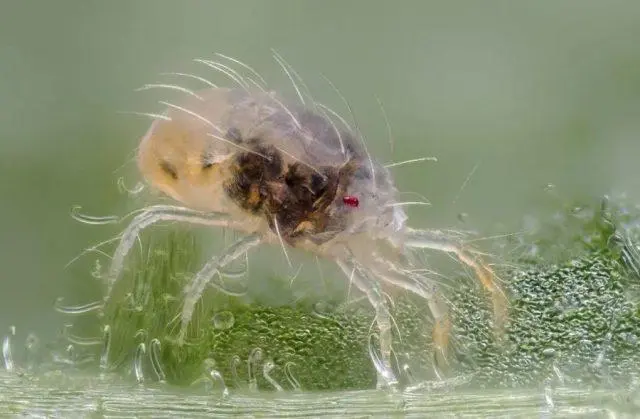Contents
The photo and description of miscanthus represent a beautiful herbaceous perennial with late flowering. It is easy to grow a crop on the site, but you should first familiarize yourself with the rules.
Characteristic and description miscanthus
Miscanthus (Miscanthus) is a perennial plant of the Grass family. It has creeping rhizomes capable of going 6 m underground, and straight stems. The leaves are leathery, scaly, very narrow, green in color. Contrasting stripes may be present on the surface.
During the decorative period, the perennial produces long shoots with fan-shaped inflorescences-panicles. The culture looks rather unobtrusive, but it is characterized by unpretentiousness and special endurance.
Miscanthus sizes
Culture belongs to the category of medium-sized or tall perennials. The stems of the plant reach 70-300 cm above the ground, depending on the variety. Thanks to creeping rhizomes, the bushes grow widely – the diameter can be more than 1 m.
Where does miscanthus grow?
In its natural environment, perennials can be seen most often in Southeast Asia. Some varieties are also found in Africa and the Far East. Miscanthus prefers well-moistened, loose soil. The perennial loves sunlight and settles mainly in open areas.
When miscanthus blooms
The flowering time of miscanthus depends on the variety, but usually the decorative period begins in late summer and lasts until mid-October. In August, long, cream-colored panicle inflorescences appear above the dense green leaves.
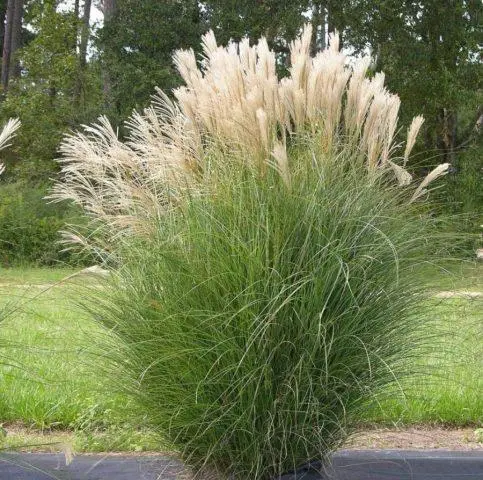
Miscanthus inflorescences can reach 20-30 cm in length.
An interesting feature of the perennial is that with the onset of cold weather, only its leaves dry out. Inflorescences persist throughout the winter.
Winter hardiness of miscanthus
The winter hardiness zone of Miscanthus is 4-5, but specific hardiness indicators depend on the variety. On average, the culture withstands temperatures down to -34 °C. Low temperatures do not harm the perennial, especially if you worry about warming the roots in advance. Panicle inflorescences become silvery in the cold season, but remain attractive.
Varieties and types of miscanthus with photos and names
Varieties of miscanthus for the Moscow region and regions with a more severe climate are presented in a wide variety. Before planting a crop on the site, it is worth studying the features of popular species.
Blooming (Miscanthus floridulus)
The plant is characterized by rapid development and good frost resistance. Almost does not need moisture, easily tolerates drought. At the end of summer, it forms small ears, but with the early onset of cold weather, it may not have time to tie inflorescences.
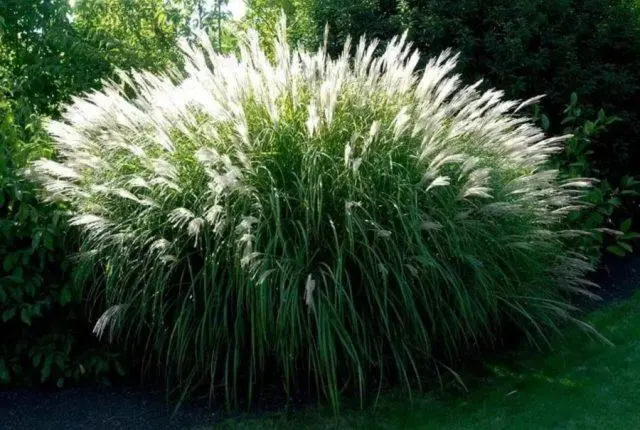
Abundantly flowering species can reach 3-4 m above the ground
Oligostachus (Miscanthus oligostachyus)
A low variety of perennial is often used not only for planting in the garden, but also for breeding on a terrace or balcony. Oligostachus inflorescences are silvery-white with a pinkish tint, very beautiful, the leaves are striped. In autumn, the plates become a bright honey-orange color.
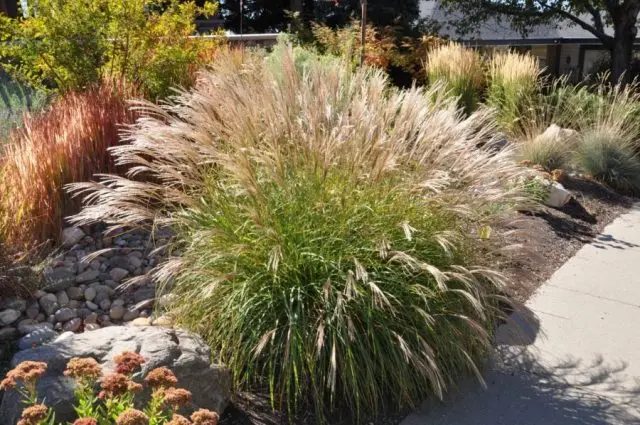
The height of the Oligostachus variety is only about 1,5 m.
Giant (Miscanthus giganteus)
Miscanthus for planting in the Moscow region has straight stems up to 3 m above the ground. The leaves of the plant are wide weeping, with a white stripe in the central part. The plates extend from the rhizome in all directions, thanks to which the perennial takes on a very decorative look. It blooms in panicles of a pinkish hue, which become silvery by winter.
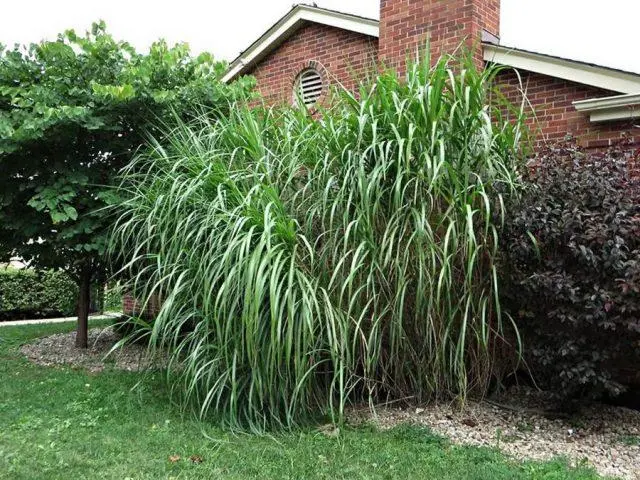
Giant miscanthus may not bloom in cold regions, so it is usually planted in warm climates.
Chinese (Miscanthus sinensis)
Perennial plant reaches 3 m above the ground, has narrow linear leaves. It blooms in short spikelets collected in loose panicles.
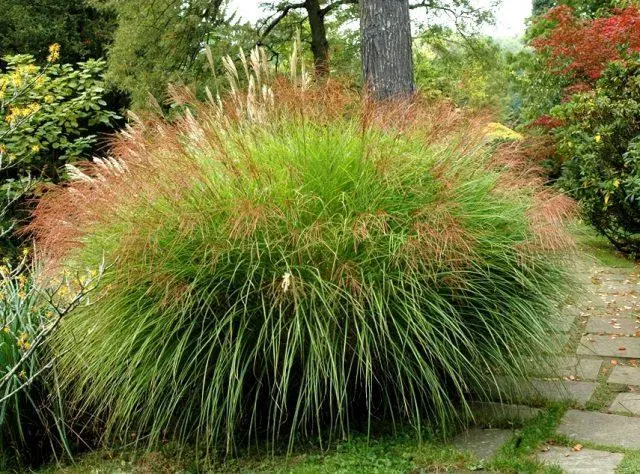
Chinese miscanthus is the most popular among breeders and is represented by dozens of varieties.
Sugarflower (Miscanthus sacchariflonis)
Heat-loving perennial grows up to 2 m above the ground. The leaves of the variety are drooping light green, the panicles are white or silvery pink.
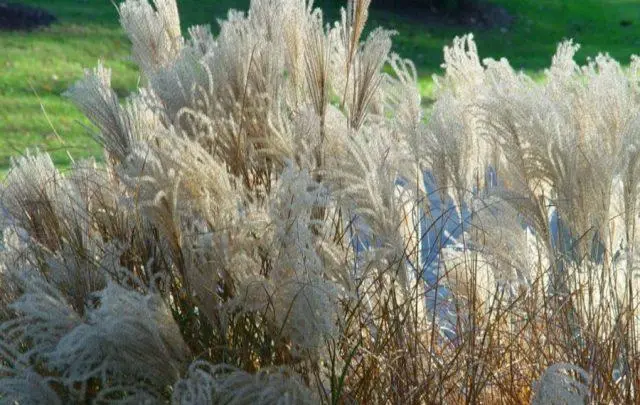
The decorative period of the sugar-flowered miscanthus lasts from July to October.
How to plant miscanthus
It is necessary to plant miscanthus in open ground in the spring from the end of March to mid-May. The exact timing depends on the region – you need to wait until the soil thaws properly and warms up. On the site, a place illuminated and protected from the wind is selected. The soil culture needs moist and fertile, loamy or sandy loam.
The miscanthus landing pattern is as follows:
- The selected area of the garden is dug up in advance.
- The soil is fertilized with organic matter and complex minerals are added to it.
- Planting pits are prepared for seedlings, approximately twice the size of the root system.
- Half fill the recesses with nutrient soil.
- Seedlings are placed in the center and the roots are spread out to the sides.
- Sprinkle the plants with the remnants of the earth and tamp the soil.
Immediately after planting, the perennial should be watered abundantly. It is also recommended to mulch the soil so that the moisture from it evaporates more slowly.
Miscanthus Care
If you provide good growing conditions for miscanthus, care for it will be quite simple. You need to pay attention to several activities.
I watered the miscanthus
Miscanthus in Siberia and in the middle lane needs regular watering, as it does not tolerate drought. It should be moistened as the top layer of the soil dries up.
Water is usually brought into the soil with a hose, the liquid is used lukewarm and well settled. It is necessary to reduce the intensity of moisture only during periods of heavy rains. In this case, the perennial will receive a sufficient amount of moisture in a natural way.
Additional fertilizing
To successfully grow miscanthus from seeds after transplanting into the ground, it is necessary to regularly feed the perennial. Fertilizers begin to be applied in the second year, in mid-May a solution of urea is added to the soil, and in June – humate in liquid form.
At the end of July and August, it is recommended to feed the culture with potassium and phosphorus. These substances strengthen the endurance of the plant and ensure its successful wintering.

After each watering, the soil in the area with miscanthus should be loosened shallowly.
pruning miscanthus
Trimming miscanthus is mandatory, as it is prone to aggressive growth. The procedure is carried out twice during the season – in spring and late autumn. During pruning, all dried and rotten leaves and stems are removed, and sprouts that have gone beyond the allotted area are also eliminated.
Even when planting a herbaceous perennial, it is recommended to dig pieces of slate or iron around the perimeter of the flower bed. They need to be deepened at least 20 cm, the height of the border should be about 10 cm. The limit line will prevent the ornamental plant from turning into a dangerous weed.
Miscanthus wintering
Most varieties are able to tolerate cold snaps down to -34 ° C. However, with the onset of autumn, in any case, it is recommended to build a shelter for a perennial. Usually, a frame structure is installed above the flower bed and agrofibre is pulled over it. The roots are sprinkled with dry leaves or humus. If the winter is expected to be cold, spruce branches are additionally laid on top of the frame shelter.
Miscanthus wakes up quite late after winter – at the end of April or in May. But already with the onset of the first thaw, it is necessary to partially remove the shelter from the perennial to prevent its decay.
How to transplant miscanthus
You can transplant miscanthus in the spring according to the standard scheme. It looks like this:
- A healthy and strong plant is dug out of the ground.
- With a sharp knife, the perennial is divided into several parts, leaving several shoots and a full-fledged root on each of them.
- For 3-4 days, the resulting seedlings are sent to a cool place.
- Bury plants up to 6 cm in separate bows in the garden.
The procedure is carried out in warm weather from April to mid-June. Plants older than four years need periodic transplantation. The shoots in the center of them gradually die off, so the old bushes lose their decorative effect.
Miscanthus reproduction
There are several ways to propagate the culture in the country. Usually use the method of division or growing from seeds. Vegetative propagation is used only when absolutely necessary – the perennial reacts poorly to any injuries and recovers for a long time.
Growing from seedlings
To grow miscanthus from seeds, you need to start planting the plant in the fall. For a perennial, a shallow container is prepared and filled with a nutrient soil mixture. Seeds are buried only up to 1 cm and germinated under a film until sprouts form.
When the culture gives the first green sprouts, the box will need to be moved to a lighted windowsill. The film is completely removed.
During the winter, the perennial is grown at a temperature of about 20 ° C, if necessary, supplementing the seedlings with fitolamps. Care is reduced mainly to moderate watering. With the onset of spring, miscanthus seedlings begin to harden in the fresh air, and with the establishment of warm weather they are transferred to open ground.
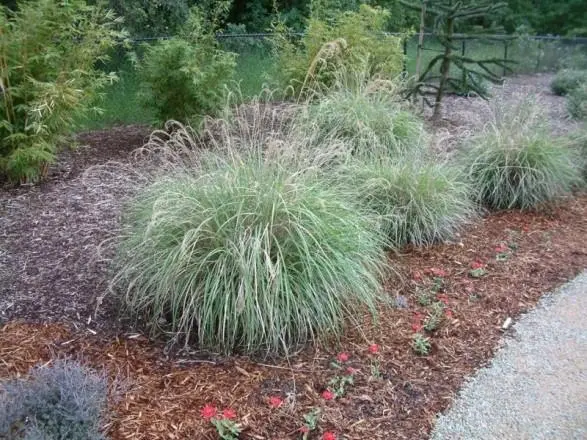
Miscanthus from seeds develops slowly and fully grows only by 3-4 years.
By dividing the bush
The culture does not like transplantation, but every few years it is recommended for it to be divided by rhizome in order to rejuvenate. The perennial is removed from the soil and cut into 2-3 parts, after which the bushes are planted in separate holes.
The roots of delenok are recommended to be treated with a growth stimulator and infusion of wood ash. This will protect the culture from infections and speed up its engraftment.
Diseases and pests
The perennial has a very high resistance to diseases and parasites. But a certain danger for him is:
- root rot – the disease leads to darkening and wilting of leaves and shoots;

Root rot affects miscanthus on waterlogged ground
- spider mite – an insect attacks a perennial in dry weather and entangles its stems and plates.

Spraying with warm water helps prevent the appearance of spider mites.
To protect against fungi, it is recommended that the culture be treated prophylactically with Bordeaux liquid or fungicides. Spraying should be carried out in early spring and autumn after flowering.
What is combined with miscanthus in landscape design
Photos of miscanthus in a flower bed show that the perennial goes well with other plants in the garden. The best neighbors for him are:
- lavender;
- fescue;
- gaura;
- stonecrop;
- purple echination;
- Japanese anemone;
- spotted window sill;
- Buenos Aires verbena.
Planting miscanthus in the landscape is recommended in the background to create a decorative background. Herbaceous perennial gives the flower bed lightness and airiness, emphasizes the beauty of bright flowers.
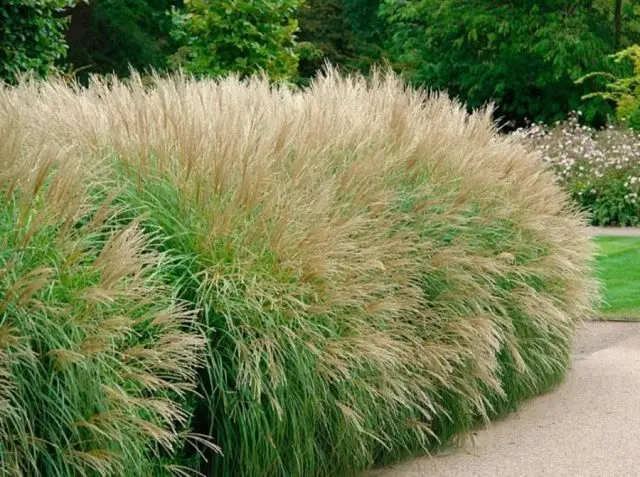
Miscanthus in the garden is planted along paths and facades
Conclusion
Photos and descriptions of miscanthus give an idea of a hardy perennial with simple care requirements. When growing, the main attention is paid to moisture – the culture does not tolerate drought well.










